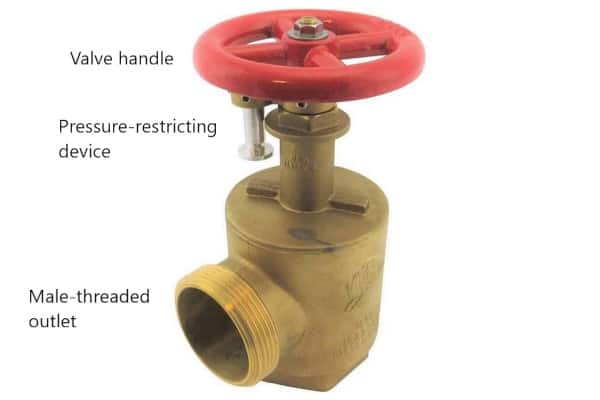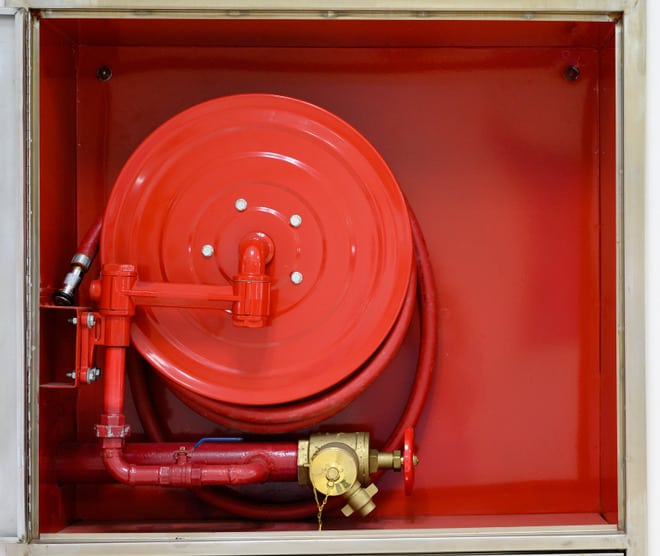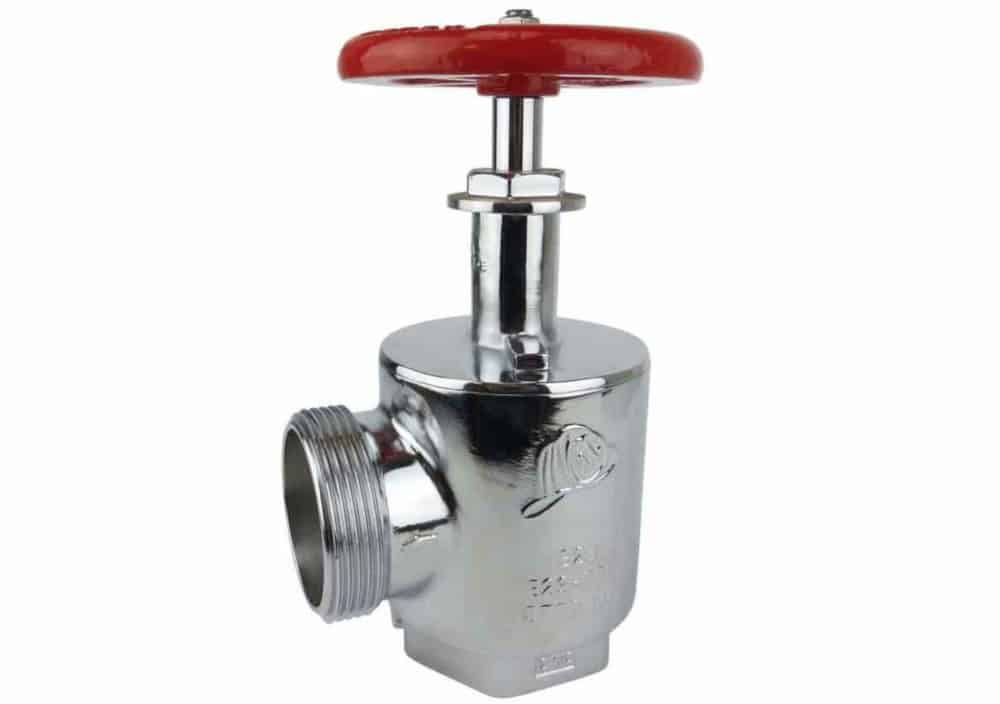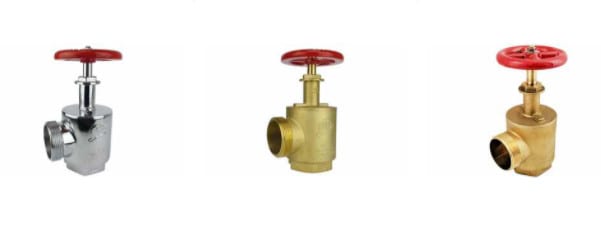The essential NFPA upkeep needed for fire hose valves in standpipe systems
A standpipe system saves firefighters from running long lengths of hoses through a building to fight a fire. A network of pipes carries water throughout the structure. Occupants can use onsite hoses in some systems, but most of them simply let firefighters hook up their hoses to connections, open a hose valve, and fight the fire.
The ability to make quick connections saves time, property, and lives, but firefighters need to trust that standpipes will work. When they don’t, the consequences can be dire. Consider the Deutsche Bank fire in NYC, where the standpipe was inoperable, and two firefighters died in the blaze.
That’s why inspection, testing, and maintenance (ITM) of standpipes is vital. This article walks building owners and managers through one part of the ITM requirements for standpipe systems: caring for your hose valves.
We explain:
- The parts of a fire hose valve
- Hose valve ITM requirements
- Obstruction and accessibility rules
- Inspecting caps, threads, and gaskets
- Inspecting valves and pressure-restricting device
- Testing and maintenance of valves
We’ll refer to NFPA 25: Standard for the Inspection, Testing, and Maintenance of Water-Based Fire Protection Systems (2020 edition), the crucial model standard published by the National Fire Protection Association (NFPA) and adopted and enforced by various governments. In addition, references to NFPA 14: Standard for the Installation of Standpipe and Hose Systems (2019 edition) provide some background on system requirements and design.
But remember, NFPA 25 and NFPA 14 are model standards—and some requirements may be enforced according to the discretion of the authority having jurisdiction (AHJ). Importantly, it’s up to local officials to decide who is qualified to perform these ITM tasks. Never attempt tests or repairs if you don’t have proper training and don’t know your standpipe system.
See our previous blog for more information on finding qualified fire protection contractors.
A core part of hose valve ITM is repairing or replacing missing or damaged parts. The QRFS catalog has the hose valves and caps you need to fix deficiencies.
A review of hose valve parts and ITM requirements
Types of standpipe systems and hose valves
A standpipe is a system of pipes running throughout a building. But here, we’re focusing on the most visible part: the hose valve. Hose valves are devices, frequently near stairwells, where firehose is or can be attached to the standpipe system. Here are the different configurations:
- In many cases, a hose valve will just appear as an angle valve coming off the standpipe. These are typically 2 1/2″ NHS hose connections meant only for firefighter use found on Class I standpipe systems.
- In other cases, you will have onsite fire hoses already connected to hose valves and/or multiple valves with or without any attached hoses. Such connections are found in either Class II or Class III standpipes.
- Class II systems have smaller 1 1/2″ hose connections, typically with fire hose provided in a rack or reel for occupant use, usually in a hose cabinet.
- Class III standpipes provide both 1 1/2″ hose stations and 2 1/2″ firefighter connections.
But depending on the history of your building and the jurisdiction, you may have hose cabinets in your building—but no hoses! Read this to learn why Class II occupant-use hose stations aren’t used much anymore.
Parts of a hose valve
Hose valves are simple pieces of equipment. On each one, you may find:
- A male-threaded angle hose valve
- A valve handle (wheel)
- A cap with a gasket
- Pressure restricting devices (if necessary)


For more information on hose valves and their role in standpipe systems, check out our introduction to standpipe fire hose valves and our comprehensive guide to angle valves.
NFPA 25 ITM requirements for standpipe fire hose valves
Understanding when and what to inspect on hose valves can be confusing because the 2020 edition of NFPA 25 has an internal conflict!
QRFS checked with NFPA committee members to confirm this fact: sections 6.2.3 and 13.6 list nearly identical tasks for hose valve ITM. But these items must be completed annually in the former section and quarterly in the latter. So, which interval is it?
Until the NFPA 25 committee can clarify this in a future edition, the schedule is determined by your local AHJ and which section they decide to enforce—so, check with them!
Here’s a comparison of what each section says:
|
From the 2020 edition of NFPA 25 3.3.16 Hose Connection The outlet of a hose valve installed on a standpipe system for connection of a fire hose. |
||
|
6.2.3 Hose Connections Hose Connections shall be inspected annually for the following conditions:
6.2.3.2 Where any deficiency is noted, the appropriate corrective action shall be taken. |
13.6 Hose Valves 13.6.1 Inspection 13.6.1.1 Hose valves shall be inspected quarterly to verify that the valves are in the following condition:
13.6.2 Testing 13.6.2.1 Class I and Class III standpipe system hose valves shall be tested annually by fully opening and closing the valves. […] 13.6.2.2 Hose valves on hose stations attached to sprinkler systems and Class II standpipe systems shall be tested every three years by opening and closing the valves. […] 13.6.3 Maintenance. Hose valves that do not operate smoothly or open fully shall be lubricated, repaired, or replaced. |
|
In short, NFPA 25 requires a periodic visual inspection of all the parts of each hose valve, though the interval of this inspection is unclear (annually or quarterly).
NFPA 25 also requires an annual (or three-year, for Class II) test to ensure the hose valves open and close properly. Finally, it requires as-needed maintenance of hose valves that don’t open or close smoothly.
Here’s how each of these inspection, testing, and maintenance tasks work:
Fire hose valve inspection: no obstructions and valves free to operate normally
As mentioned, the main ITM requirement is a regular visual inspection. One of the first things an inspector will check is that hose valves are free from obstructions.
Specifically, NFPA 25 says you must ensure that the valve is “capable of normal operation” (13.6.1). NFPA 14 provides more details for this general requirement, explaining that you must have 3” of clearance between the valve handle (whether it’s entirely open, fully closed, or anywhere any between) and any object (4.7.5).
Section 6.2.3 of NFPA 25 refers to “visible and physical obstructions.” So, while hose valves have no specific signage requirement, they can’t be hidden or obscured.
Fire hose valve inspection: caps, threads, gaskets, and valves
During the hose valve inspection, the inspector checks that the connection itself is in good condition. This means verifying that:
- Caps are in place
- Cap gaskets are intact and in place
- The connection threads are undamaged
Unlike fire department connection (FDC) plugs or caps on the outside of a building, hose valve caps are less often the target of theft or vandalism. But you may still occasionally have to replace them.
Additionally, an inspector will verify that the valve is in good condition. This means checking that:
- The valve handle isn’t broken
- The valve isn’t leaking
A visual inspection won’t always reveal a leaking hose valve, even with caps removed, because not all standpipes have wet (water-filled) pipes. But where leaky valves or broken valve handles are found, they must be replaced.
If replacements are necessary, the QRFS catalog has the 2 1/2″ or 1 1/2″ hose valves and caps you need.
Inspect the pressure-restricting devices
Section 6.3.2 of NFPA 25 requires an annual inspection of any pressure-restricting devices on hose connections. Pressure-restricting devices limit how far the hose valve may be opened and thus limit the flow and pressure from the valve.
Not all standpipe systems have pressure-restricting devices. And not every hose valve will be equipped with a PRD in systems that have them. Usually, these devices are found in taller buildings where the pressure must be restricted on lower floors but not higher floors because of the effects of distance and gravity.
Thus, you’ll only find these devices on the lower floors where water pressure exceeds 100 PSI (for 1 1/2″ connections) or 175 PSI (for 2 1/2″ connections) per section 7.2.3 of NFPA 14.
Testing and maintenance: opening and closing valves
NFPA 25 requires a simple test of every valve: fully open and close it to see that it operates smoothly. If a valve doesn’t work smoothly or open all the way, it must be lubricated, repaired, or replaced (13.6.3).
The standard provides different schedules for different types of standpipe systems. Class I and III systems—the vast majority—get tested annually (13.6.2.1). However, hose valves located on hose stations attached to a sprinkler system or a Class II standpipe only need to be tested every three years (13.6.2.2).
This valve test does not have to make a mess, as NFPA 25 specifically says inspectors don’t have to flow water during it. They may leave the cap on the hose connection, keeping all the water inside (A.13.6.2.1). The purpose of the test is to test the valve, not flow.
Even though the fire hose valve test is not intended to flow water, it should only be done by a trained individual. This is doubly true if you have any type of dry standpipe. Opening the valve will vent the air pressure in the valve and, depending on the system type, flood the pipe. After such an event, a standpipe needs to be drained and reset. Learn more about the maintenance of dry standpipes here.
If a valve is hard to turn, lubricating it may restore proper function. But if lubricant or another repair attempt by a qualified fire protection professional doesn’t fix it, you must replace the valve with a new one.
ITM for standpipe hose valves is vital—but pretty simple
Well-maintained hose valves ensure firefighters or trained occupants can access water in an emergency. And though NFPA 25’s requirements for the schedule of some inspections are currently a little murky, the rest of ITM is straightforward.
Hose valves must be regularly inspected to verify that:
- They are unobstructed
- The caps and gaskets are in place
- The connection is undamaged
- The valve handle is undamaged
- The valve does not leak
- The pressure-restricting device is in place (if needed)
Additionally, a qualified individual must perform an annual (or three-year, for Class II connections) test of valve operation.
If you are missing any parts or need replacement valves, QRFS has the components you need for 1 1/2″ and 2 1/2″ standpipe hose valve connections.
If you have questions or need help placing an order, call us at 888-361-6662 or email support@qrfs.com.
This blog was originally posted at blog.qrfs.com. If this article helped you, check us out at Facebook.com/QuickResponseFireSupply or on Twitter @QuickResponseFS.




